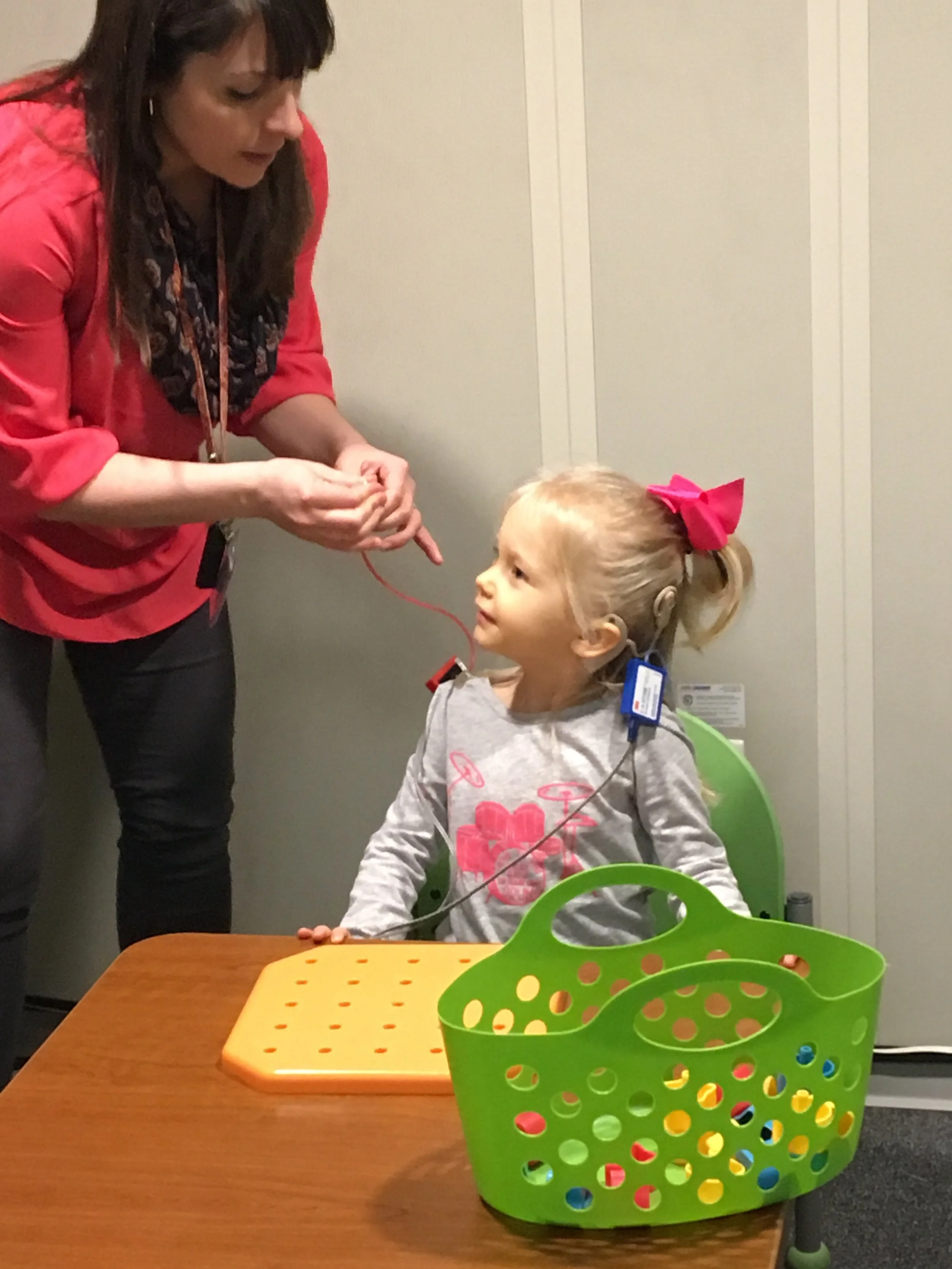The Ear And How Hearing Works
What are the different parts of the ear?
The Outer Ear is made up of:
Pinnacle: the part we see on the sides of our head
Ear canal (external auditory canal): the entry point for sound waves into the ear
Eardrum (tympanic membrane): transmits sound from the air to the ossicles; separates the outer and middle ear
The Middle Ear is made up of:
Eardrum (tympanic membrane)
Ossicles: three small bones called the malleus, the incus and the stapes that transfer the movement of the eardrum to the cochlea
Tympanic cavity: a small air-filled space surrounding the ossicles
Eustachian tube: regulates air pressure in the ear; allows for mucus drainage in the event of an ear infection
The Inner Ear is made up of:
Cochlea the snail-shaped organ for hearing that converts sound to electrical signals and sends them to the cochleae nerve
Semicircular canals: help with balance
Vestibular nerve: nerve that goes to the brain and gives the brain information about balance
Cochlear nerve (auditory/ acoustic nerve): sends sound information from the ear to the brain
What hearing looks like: the anatomy of the ear
The Auditory (Hearing) System processes sound information as it travels from the ear to the brain, and includes brain pathways. It is broken up into three areas: the outer, middle and inner ear. Sound enters the ear through the outer ear, and hits the eardrum (tympanic membrane), causing the tiny bones (malleus, incus, and stapes) in the middle ear vibrate. These vibrations are conducted to the cochlea, which transforms the sound into nerve impulses and sends them to the brain.
This is Charlotte, age 4, in an audiology sound booth having her aided hearing tested. Over the years, she’s learned to respond to sounds through games, which helps keep kids focused on the hearing tests. Sometimes the audiologists use video games, too. She always has fun trying to listen for the sounds.
There are Four Types Of Hearing Loss
Conductive Hearing Loss:
Hearing loss caused by something that stops sound from getting through the outer of middle ear and being “conducted” to the inner ear. This type of hearing loss can often be treated with medicine or surgery.
Senorineural Hearing Loss
Hearing loss that occurs when there is a problem in the way the inner ear or hearing nerve works.
Mixed Hearing Loss
Hearing loss that includes both a conductive and sensorineural hearing loss,
Auditory Neuropathy Spectrum Disorder or Auditory Dysnynchrony
Hearing loss that occurs when sound enters the ear normally, but because of damage to the inner ear or the hearing nerve, sound isn’t organized in a way the brain can understand. For more information on Auditory Neuropathy, click here.
What does being “deaf” or “hard of hearing” really mean? Are their defined levels of hearing loss?
The degree of hearing loss or level of hearing loss refers to the severity of loss. It is stated in terms of the loudness of sounds that a person is not hearing.
The above chart was created to help explain what sounds your child can and cannot hear without technological amplification, such as a hearing aid or cochlear implant).
The loudness of sound is measured in units called decibels (dB). Your child’s audiologist, speech-language pathologist, teacher or other trained professional will be able to provide you with more detailed information.
Slight Hearing Loss, 16-25 dB:
At 16 dB hearing loss, a child can miss up to 10% of speech when a speaker is at a distance greater than 3 feet. This category includes fluctuating conductive hearing loss, such as when a child has fluid in the middle ear, so the number of children with slight hearing loss is often underestimated.
Mild hearing loss, 26-40 dB:
For a child with mild hearing loss, soft sounds are hard to hear including whispering, which is around 40 dB in volume. The child also cannot hear some soft speech sounds that are spoken at a normal volume. At 40dB hearing loss, a child may miss 50% of classroom discussions.
Moderate hearing loss, 41-55 dB:
A child with moderate hearing loss may hear almost no speech when another person is talking at normal volume. Sounds that are loud to a hearing child with normal hearing will be a whisper to children with this level of hearing loss. At a 50dB hearing loss, a child may not heat up to 80% or speech.
Moderately Severe Hearing Loss, 56-70 dB:
A child with moderately sever hearing loss may have problems hearing sounds softer than 56 to 70 dB. An example of this sound level would be a dishwasher (60dB). At 70 dB, a child may miss almost all speech.
Severe Hearing Loss, 71-90 dB:
A child with severe hearing loss will hear no speech when a person is talking at a normal level. They may hear only some very loud noises: vacuum (70 dB), blender (78 dB), hair dryer (90 dB)
Profound Hearing Loss, 91+ dB:
Children with profound hearing loss cannot hear anything softer than 91 dB. A hold with a profound hearing loss will hear no speech and at most very loud sounds such as a music player at full volume (100 dB), which would be damaging for people with normal hearing, or car horn (110 dB).
Source: Type, Degree and Configuration of Hearing Loss whitepaper by ASHA, the American Speech Language Association
This video of the Flinstones shows the Frequency In Hertz chart at the bottom and how different hearing loss "sounds." Hearing is easily taken for granted and can quickly impact how much of the world one is connecting to.



